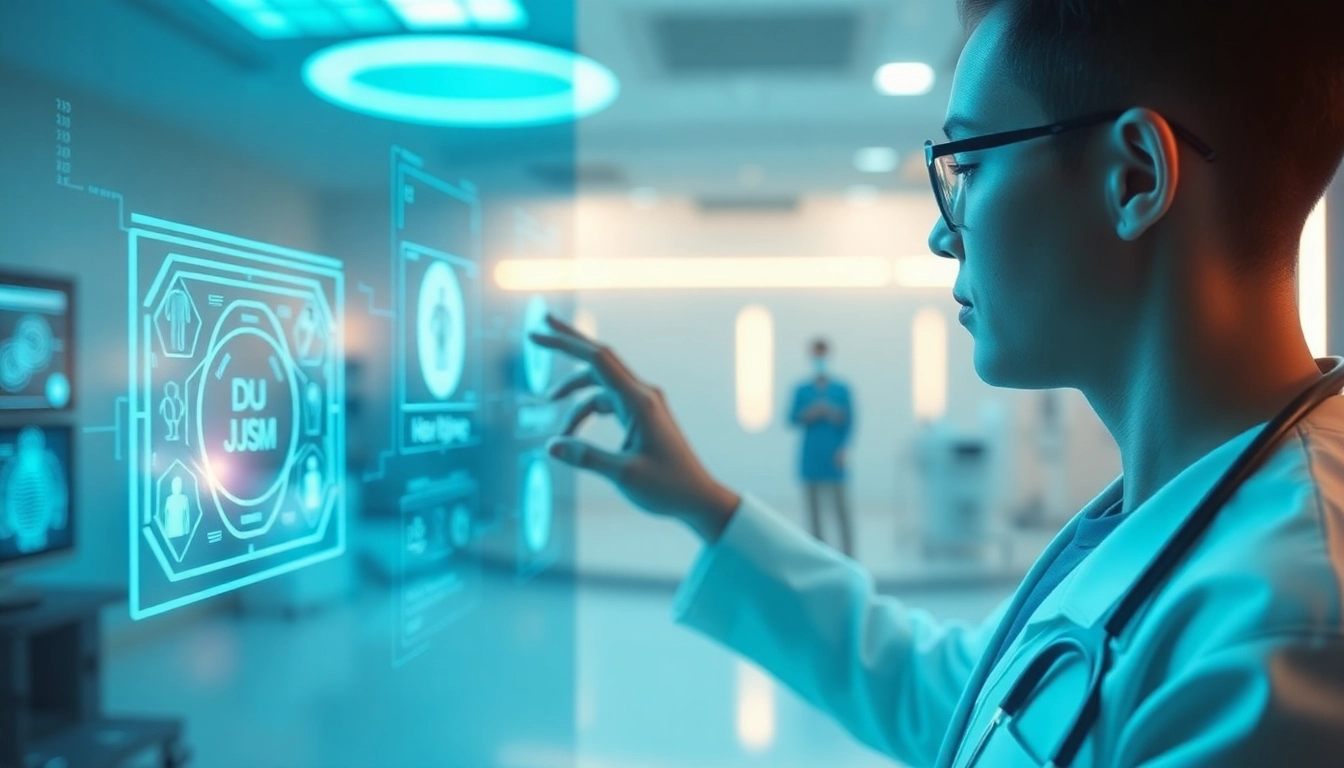Understanding Informatics in Healthcare
In today’s digital age, the integration of informatics into healthcare is revolutionizing patient care and operational efficiency across the globe. Informatics leverages data, information science, and technology to improve healthcare delivery and management significantly. As healthcare systems continue to evolve, understanding the principles of informatics is crucial for stakeholders. For comprehensive insights into this transformative field, you can explore https://www.informaticsview.com, a platform dedicated to advancing knowledge in health informatics.
Defining Key Concepts of Informatic Systems
The term “informatics” can be broadly defined as the science of processing data for storage and retrieval. In the context of healthcare, it specifically refers to the systematic integration of data within a healthcare environment to improve patient outcomes, streamline processes, and promote better health management.
Key components of informatics in healthcare include:
- Data Management: Collecting, storing, and manipulating data related to patient health, treatments, and outcomes.
- Information Technology: The use of technology to manage health information, including electronic health records (EHRs), clinical decision support systems (CDSS), and telehealth solutions.
- Health Analytics: Utilizing data analytics to generate insights which facilitate decision-making in clinical settings.
The Role of Informatics in Modern Medicine
Informatics plays an essential role in modern medicine by enhancing operational efficiencies and improving patient care through better data utilization. Healthcare professionals use informatics for various tasks, such as:
- Clinical Workflows: Designing and optimizing workflows that enhance team collaboration and reduce redundancies.
- Patient Management: Tracking patient history, treatments, and outcomes through sophisticated software solutions.
- Clinical Research: Analyzing existing patient data to derive insights that can improve future medical practices.
Importance of Data Management in Health Services
Data management is crucial in healthcare because it directly impacts patient safety and the quality of care. Proper data management ensures that accurate and timely information is available for clinical decision-making. Additionally, it supports regulatory compliance, promotes transparency, and facilitates ongoing quality improvement initiatives.
Applications of Informatics in Clinical Settings
Electronic Health Records and Their Impact
Electronic Health Records (EHRs) represent a foundational application of health informatics. EHRs centralize patient information, making it readily accessible to authorized healthcare providers. This immediacy leads to better coordinated care across various healthcare settings.
Key impacts of EHRs include:
- Enhanced Communication: EHRs allow for seamless communication between healthcare providers, reducing chances of errors arising from miscommunication.
- Improved Patient Safety: Immediate access to patient data helps clinicians make informed decisions, quickly identifying potential adverse drug interactions or contraindications.
- Streamlined Operations: EHRs optimize administrative tasks such as scheduling, billing, and coding, which facilitates more efficient healthcare practices.
Telehealth and Remote Patient Monitoring Tools
Telehealth has emerged as a pivotal application of informatics, allowing healthcare providers to deliver care to patients remotely. This approach is particularly beneficial for managing chronic diseases, as patients can receive constant monitoring without frequent visits to healthcare facilities.
Examples of telehealth applications include:
- Video Consultations: Enabling direct communication between providers and patients, which can improve adherence to treatment plans.
- Remote Monitoring Devices: Tools such as heart rate monitors or glucose meters that transmit data to healthcare teams for real-time analysis.
- Patient Portals: Secure online platforms where patients can access their health data, schedule appointments, and communicate with their healthcare providers.
Clinical Decision Support Systems Explained
Clinical Decision Support Systems (CDSS) are designed to enhance healthcare decision-making by providing clinicians with knowledge and person-specific information. These systems utilize integrated healthcare data to offer evidence-based recommendations and alerts.
Key functionalities of CDSS include:
- Alerts and Reminders: Informing providers of potential issues, such as drug interactions or overdue preventive services.
- Diagnostic Support: Providing insights based on patient data, medical history, and existing scientific literature.
- Treatment Recommendations: Suggesting optimal treatment pathways based on individual patient characteristics and preferences.
Challenges in Implementing Health Informatics
Data Security and Privacy Concerns
With the increasing reliance on technology comes significant challenges regarding data security and patient privacy. Protecting sensitive health information from breaches is critical to maintaining trust within healthcare systems. Healthcare organizations must implement robust cybersecurity measures and ensure compliance with regulatory frameworks such as HIPAA.
Interoperability Issues Between Systems
Interoperability refers to the ability of various information systems, devices, and applications to communicate and exchange data seamlessly. Achieving interoperability is essential to leverage the full potential of health informatics. However, many disparate systems currently in use hinder effective data sharing, which can adversely affect patient care.
Strategies to overcome interoperability challenges include:
- Adopting standardized formats like HL7 and FHIR for data exchange.
- Encouraging collaboration among different healthcare IT vendors to create compatible systems.
- Investing in middleware solutions that facilitate communication between non-compatible systems.
Resistance to Change Among Healthcare Professionals
Resistance to adopting informatics tools is a common challenge faced by healthcare organizations. Physicians and staff may fear technology that could complicate their routines or disrupt established workflows.
To address resistance, organizations should focus on:
- Providing comprehensive training to staff to increase comfort levels with new technologies.
- Involving healthcare professionals in the selection and implementation process of informatics tools.
- Showcasing evidence of improved efficiency and patient outcomes resulting from informatics integration.
Future Trends in Health Informatics
Integrating AI and Machine Learning in Practices
The integration of Artificial Intelligence (AI) and machine learning (ML) into health informatics holds immense potential for enhancing clinical decision-making. These technologies can analyze vast amounts of data to uncover patterns and insights that inform treatment plans.
Notable applications include:
- Predictive Analytics: Forecasting patient outcomes based on historical data.
- Automated Diagnostics: Analyzing medical images and lab results with high accuracy.
- Personalized Treatment Plans: Tailoring treatment pathways to individual patient needs and genetic profiles.
The Growing Significance of Patient Engagement Tools
As healthcare shifts towards patient-centered models, the role of patient engagement tools is becoming increasingly vital. These tools empower patients to take active roles in their healthcare management, leading to improved adherence to treatment and outcomes.
Examples include:
- Mobile Health Apps: Applications that allow patients to track their health metrics, medications, and appointments.
- Chronic Disease Management Platforms: Tools that provide actionable insights and personalized tips based on patient data.
- Patient Feedback Systems: Platforms for soliciting patient input to improve service delivery.
Predictive Analytics in Healthcare
Predictive analytics is poised to reshape healthcare by identifying trends and potential risks before they manifest. By leveraging historical data and modeling, stakeholders can make informed decisions about resource allocation, preventative care initiatives, and patient management strategies.
Strategies leveraging predictive analytics include:
- Risk Stratification: Identifying high-risk patients who may benefit from targeted interventions.
- Resource Optimization: Allocating staff and equipment more effectively based on predicted patient volumes.
- Population Health Management: Analyzing data trends to inform public health reporting and initiatives.
Measuring the Impact of Informatics on Patient Outcomes
Metrics for Evaluating Healthcare Informatics Effectiveness
Measuring the impact of informatics on patient outcomes is essential for ensuring that technological investments yield tangible benefits. Key performance indicators (KPIs) for evaluating the effectiveness of informatics include:
- Clinical Outcomes: Tracking metrics such as reduction in hospital readmissions, improved chronic disease management, and enhancement in adherence rates.
- Patient Satisfaction: Gathering feedback regarding patient experiences, access to information, and overall satisfaction with healthcare services.
- Operational Efficiency: Assessing time saved, cost reductions, and improved workflows due to the implementation of informatics tools.
Case Studies Demonstrating Successful Implementations
Real-world examples of effective informatics applications illustrate the positive outcomes that can be achieved. For instance, a prominent hospital system may have implemented an EHR system that led to significant changes in care coordination and patient tracking. Another case study might highlight how telehealth adoption resulted in significant patient engagement levels and decreased treatment delays during the COVID-19 pandemic.
Best Practices for Continuous Improvement
To sustain progress in health informatics, organizations must adopt continuous improvement methodologies. This includes:
- Regular Training and Education: Ensuring that staff are continuously updated on new technologies and processes.
- User Feedback Mechanisms: Incorporating input from healthcare professionals and patients to refine tools and workflows.
- Data Analysis: Routinely analyzing healthcare data to identify areas for improvement and optimization.















Leave a Reply